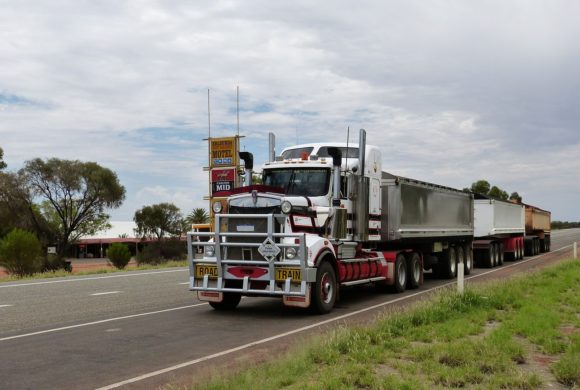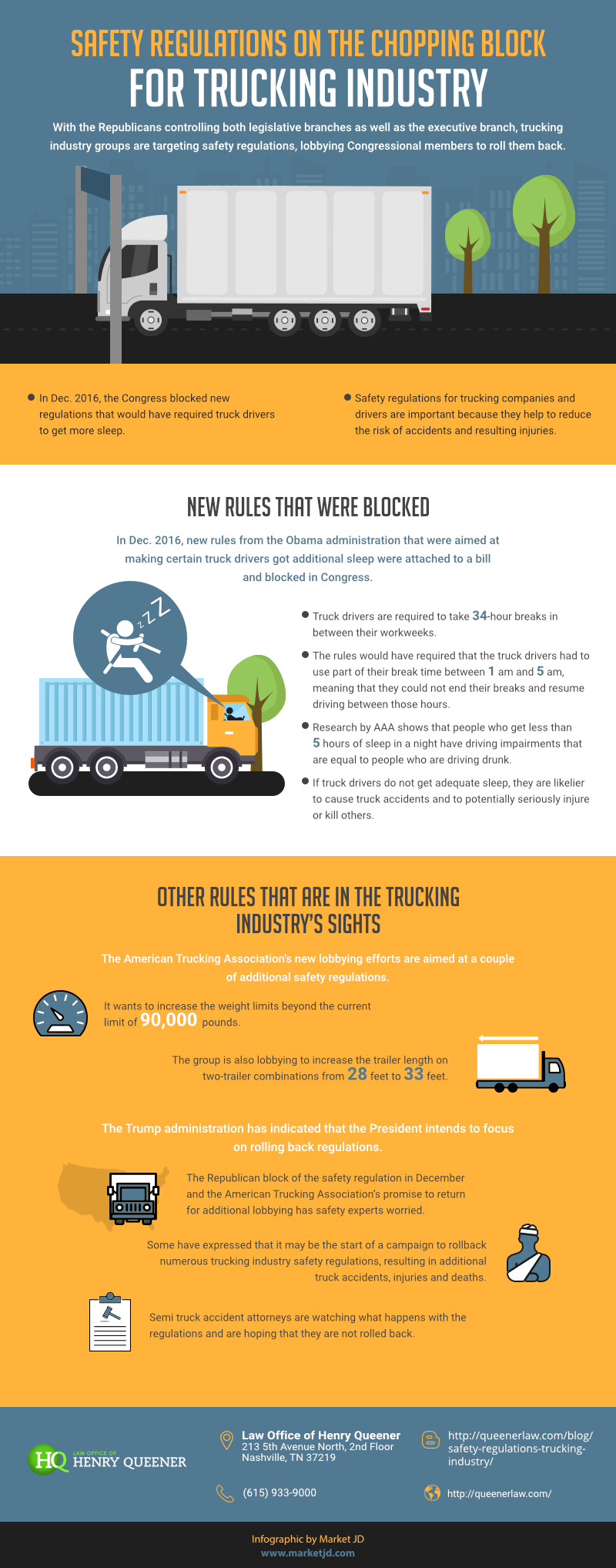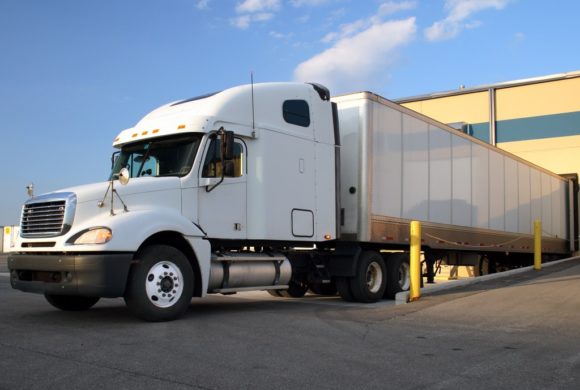
by Queener Law | Nov 23, 2016 | Colorado, Kentucky, Tennessee, Trucking Accident
Semi-truck rollovers cause hundreds of fatalities to truckers and motorists every year. Even though they represent only 3.3% of all semi-truck accidents, rollovers are responsible for nearly 50% of all fatalities suffered by truck drivers nationwide. The following are the most commonly cited reasons seen by semi-truck accident lawyers for semi-trucks toppling over.
Improper Loading & Shifting Loads
A semi-truck’s center of gravity can shift dramatically if it is improperly loaded. If heavier goods are placed on top of lighter goods the vehicle can become highly stable. As a driver navigates down the road, curves in the road, high winds, or sudden stops can cause the vehicle to become uncontrollable.
Another common factor are live loads that can move and shift. A semi-truck loaded with livestock can have a highly mobile cargo. If these animals suddenly move to one side, it can unexpectedly shift the vehicle’s center of gravity and cause it to overturn.
Sharp Turns
Whether it is a gradual turn down the slope of an on-ramp or a sharp corner on a city street, semi-trucks can become unbalanced while conducting these maneuvers. Should the driver lose focus for even an instant as they make a turn, they can lose control over the vehicle as the wheels lift off the road and the vehicle topples.
Bad Roads & Bad Design
Large potholes, soft shoulders, and lax road maintenance can make the roadway unsafe for large vehicles. As the vehicle travels over poorly maintained roads, the driver may not be able to control the vehicle as it encounters these flaws.
Additionally, improperly designed roads can create sharp corners and steep grades. When semi-trucks attempt to navigate poorly designed roads, they may be required to conduct maneuvers that exceed the vehicle’s safe handling limits.
Speeding is another leading cause of semi-truck rollover accidents. A speeding semi-truck has enormous inertia. Semi-truck accident lawyers know that even a gradual turn at a high rate of speed is enough to pull the vehicle over on its side. This problem is even greater if the vehicle is overloaded, in which case the driver will become a victim of the basic principles of physics.
Driver Overcorrection
If a semi-truck driver overcorrects a turn or lane change, the vehicle can become unstable and overturn. Indeed, driver error is a common cause of semi-truck rollover accidents across the nation. It’s a considerable problem with newer, less-experienced drivers that is exacerbated when driver fatigue and other factors are added into the equation.

by Queener Law | Nov 9, 2016 | Tennessee, Trucking Accident
With the Republicans controlling both legislative branches as well as the executive branch, trucking industry groups are targeting safety regulations, lobbying Congressional members to roll them back. In Dec. 2016, the groups were successful when Congress blocked new regulations that would have required truck drivers to get more sleep. The groups have promised to continue their efforts in order to get additional regulations rolled back, and safety groups are worried. Semi truck accident attorneys in Tennessee understand the importance of safety regulations for trucking companies and drivers because they help to reduce the risk of accidents and resulting injuries.
New Rules That Were Blocked
In Dec. 2016, new rules from the Obama administration that were aimed at making certain truck drivers got additional sleep were attached to a bill and blocked in Congress. Truck drivers are required to take 34-hour breaks in between their workweeks. The rules would have required that the truck drivers had to use part of their break time between 1 am and 5 am, meaning that they could not end their breaks and resume driving between those hours. Research by AAA shows that people who get less than five hours of sleep in a night have driving impairments that are equal to people who are driving drunk. If truck drivers do not get adequate sleep, they are likelier to cause truck accidents and to potentially seriously injure or kill others.
Other Rules That Are In the Trucking Industry’s Sights
The American Trucking Association was emboldened by its win in December, and it vowed to return in January. The organization’s new lobbying efforts are aimed at a couple of additional safety regulations. It wants to increase the weight limits beyond the current limit of 90,000 pounds. The group is also lobbying to increase the trailer length on two-trailer combinations from 28 feet to 33 feet.
The Trump administration has indicated that the President intends to focus on rolling back regulations. While there are no specific indications that Trump will be focusing on the transportation industry, the Republican block of the safety regulation in December and the American Trucking Association’s promise to return for additional lobbying has safety experts worried. Some have expressed that it may be the start of a campaign to rollback numerous trucking industry safety regulations, resulting in additional truck accidents, injuries, and deaths. Semi truck accident attorneys are watching what happens with the regulations and are hoping that they are not rolled back.

by Queener Law | Nov 2, 2016 | Colorado, Kentucky, Tennessee, Trucking Accident
Technology is expected to curb the recent rise in fatalities associated with commercial trucks. A series of studies found that the Driver Warning System, the Integrated Safety System, and the Active Chassis Control Systems, among others, will be widely adopted by 2020 and result in significant reduction in fatalities.
Trucks on the Road
Commercial trucks form an integral part of the economy. Commercial trucks, from big rigs to inner-city delivery trucks, shuffle goods all over the country. These trucks deliver Amazon packages, shipments from China, and business deliveries.
Trucks are dangerous because they crowd onto busy boulevards and streets. Trucks make deliveries to important commercial and business center, therefore, trucks must operate on roads utilized by passenger vehicles – it is unavoidable. Furthermore, many of those deliveries are also in high foot-traffic areas, which exposes pedestrians additional danger. Truck drivers are compelled to operate large, slow vehicles in crowded, mixed-use conditions.
Fatalities Caused by Trucks
Despite their relatively small numbers, commercial trucks represent a disproportionate amount of collision fatalities.
According to the National Highway Traffic Safety Administration (NHTSA), fatalities associated with large trucks increased for the fourth consecutive year, totaling 3,964 in 2013. Additionally, market research conducted by Volvo Trucks’ Accident Research Team in Europe found that 90 percent of all truck safety incidents are partly or entirely due to human error.
Trucks are inordinately dangerous for a number of reasons. First, their relative size ensures that most passenger vehicles are obliterated in an accident.
Second, trucks sit much higher than passenger vehicles, so during an accident cars are often pulled down and underneath commercial trucks. The majority of fatalities from commercial truck accidents are caused when passenger cars are crushed by commercial truck tires.
Third, commercial trucks are handled very differently from passenger vehicles, yet fellow drivers do not appreciate the distance they should give commercial trucks.
Fourth, trucks are designed to operate for hundreds of thousands of miles but they require regular maintenance. Truck operators, when crunched by tight deadlines, do occasionally skip or abbreviate required and recommended maintenance.
Active vs. Passive Safety Systems
To address these dangers, truck manufacturers design a variety of systems to improve safety. These systems fall into two types: active and passive.
Active systems are designed to assist drivers in avoiding collisions using alarms and alerts. For example, some trucks are outfitted with lane assist technologies which alert the driver whenever he drifts out of his lane. Passive systems, such as crumple-proof cabins and air bags, are used to reduce the damage from a collision, not avoid it.
Most safety experts believe that as active technologies improve, passive systems will become less and less necessary.
Driving Safety Technologies
Most modern technology is focused on developing active safety systems that alert the driver or include a secondary layer of automated action.
Safety technologies include:
- Driver Information Warning System
- Integrated Safety System
- Active Chassis Control System
- Lane Departure Warning
- Blind Spot Detection Systems
- Braking Assist
All of these technologies already exist in various forms.
For example, driver warning systems have been outfitted on trucks since the 1990s. The most common example are lane-warnings. Modern trucks are often also equipped with brake alerts, rear cameras, and other situational awareness systems.
Brake assists are an area in which autonomous driver technologies are expanding. Brake assists, rather than issue warnings, include a computer which can automatically assert control over the truck and apply the brakes. Very few trucks are outfitted with this system, but wide adoption is expected.
Active chassis control systems are a new area of development. Active Chassis Control Systems take control whenever the computer interprets that the truck is losing control. The Chassis System represents a significant expansion of automation over brake assists.
Projected Adoption Rates
The industry is already beginning to adopt these technologies without legislative impetus. Research conducted by Frost and Sullivan found that the growing awareness of impending legislation has spurred truck fleets to adopt more safety technologies as a way to drive down their total cost of ownership.
In 2013, 409,417 safety systems were outfitted in trucks; by 2020, that number is expected to rise to 917,069 safety systems. Volvo expects that 35 million trucks globally will be connected and outfitted with collision-avoidance systems. Adoption of new safety technologies is critical to ensuring that commercial trucks remain competitive and compliant with new safety regulations.
Burden on Other Drivers
However, despite all of the safety technology, it is ultimately up to the other drivers who share the road with commercial trucks to behave responsibly. The majority of commercial truck accidents are traceable to a mistake committed by the other driver, rather than the truck operator. In the end, no amount of safety technologies can trump the importance of personal responsibility and awareness.

by Queener Law | Oct 20, 2016 | Colorado, Kentucky, Tennessee, Trucking Accident
Thousands of people are injured or killed each year in multi-vehicle accidents involving large trucks. in 2013, 3,964 people were killed, and 95,000 were injured in collisions with large trucks. 274 of these died, and 17,000 were injured in accidents that involved multiple trucks or other vehicles.
Recently, a crash on I-40 outside of Crossville highlighted the dangers of multi-vehicle truck accidents. The accident occurred when a trailerless truck crossed the median and entered the oncoming lane of traffic. The truck hit a Nissan Sentra head on before plowing into another semi-truck, at which point both trucks erupted in flames. The accident killed three people and injured one more.
Truck injury lawyers warn that multiple-Vehicle collisions involving large trucks present a number of hazards to motorists. First, the smaller stature and lighter weight of passenger vehicles makes them prone to compression. These smaller vehicles can become sandwiched between the semi-truck and any vehicles in front of them. In addition to the immediate physical injuries occupants can suffer, occupants can become trapped within the vehicle. This can delay extraction and can be fatal if the injured party is bleeding either internally or externally.
Another considerable risk is the possibility of fire. If the fuel tank on the passenger vehicle or the semi-truck rupture, this can flood the accident scene with flammable gasoline or diesel fuel. Semi-trucks carry up to 300 gallons of diesel that can provide plenty of fuel for a fire to rage out of control. If this fuel ignites, it can create life-threatening burns and lead to the inhalation of toxic fumes from the fire to anyone in the vicinity. Even if the fuel doesn’t ignite, spilled fuel can irritate and damage the respiratory system and lead to toxic shock to anyone who is exposed to wet fuel or vapors.
Multiple-vehicle truck collisions are also known for creating compound injuries. As the vehicle is struck from one angle and pushed into another vehicle at another angle, this can jar drivers and their passengers too and fro in rapid succession. This can lead to whiplash, compound fractures, and blunt force trauma on multiple parts of the body. This can complicate treatment and lead to longer recovery times. The more complex the injuries, and the more complicated the treatment, the greater the impact it will have on the injured party’s life and lifestyle.

by Queener Law | Oct 13, 2016 | Colorado, Kentucky, Tennessee, Trucking Accident
Improperly loaded semi trucks can pose significant safety risks to the driver as wells as to other motorists and even pedestrians. The Federal Motor Carrier Safety Administration (FMCSA) has developed very clear and specific guidelines that truckers, truck loaders and trucking companies are supposed to follow. Unfortunately, not everyone abides by these rules, and severe truck crashes are often a result.
The Impact of Overweight Trucks
In 2014, the United States Department of Transportation issued approximately 8,000 citations for overweight semi trucks. When a large truck is overweight, the risk for crashes increases significantly. Load weight affects the truck’s downhill speed, stopping distance, and maneuverability. A heavier load also puts added stress on various components of the truck like the brakes and tires, which could cause them to fail and cause a crash. In the event of a sudden stop, an overweight truck has a higher chance of jack-knifing or rolling over as well.
When fully loaded, a semi truck typically weighs about 20 times more than the average car or small truck. The damages sustained by the smaller vehicles on impact are often severe. When a truck is overweight the impact realized in a crash is intensified, which is even more dangerous.
Improper Cargo Distribution and Securement
When a truck’s load is not distributed on or inside the trailer correctly, it raises the risk for a rollover accident. If a load is top heavy or the weight is not evenly distributed on both sides of the trailer, turns can be deadly. Crashes can occur even when a truck is loaded correctly, however, if that load is not adequately secured.
The FMCSA provides a guide for properly securing truck loads. When the right number of tiedowns are not used, tiedowns are placed incorrectly, or they are in poor condition, loads can shift or even break loose. In addition to tiedowns, dunnage or dunnage bags, and shoring bars are often used to secure loads. Improper placement or an inadequate number of these load securement tools can allow loads to shift as well. A shifting load can make turns or curves especially dangerous.
Who is Liable for Improperly Loaded Truck Crashes?
The truck driver, anyone hired to load a truck, and the trucking company can all be held liable for damages, injuries and wrongful death when a truck is overweight or its load is not properly secured and it causes a crash.

by Queener Law | Oct 6, 2016 | Tennessee, Trucking Accident
Federal agencies are proposing speed limiters on large trucks to reduce the number of accidents that occur each year from trucking accidents around the country. A Nashville truck accident lawyer sees trucking accidents on Tennessee highways that commonly result in serious injuries and fatalities.
Federal Proposals for Speed Limiters
The Federal Motor Carrier Safety Administration (FMCSA) and the National Highway Traffic Safety Administration (NHTSA) recently released a long-awaited proposal that requires speed limiters on large, heavy-duty trucks. According to agency officials, speed limits of 60, 65 or 68 mph would be imposed through a special device, called a speed limiter, to all newly-manufactured vehicles with a gross vehicle weight rating of more than 26,000 lbs. According to the proposal, the NHTSA would require speed limiters for all trucks, public buses and school buses, and multipurpose passenger vehicles, while the FMCSA would only require them for commercial motor vehicles.
The proposed regulation for speed limiters would require truck manufacturers to activate speed limiters at the time of manufacture, as well as equipping trucks already on the road with engine control modules that are capable of restricting speed. For safety in both cases, federal agencies are proposing that trucks must have activated speed limiters for as long as the truck remains on the road.
The Potential Impact of Speed Limiters
Based on the review of available data, limiting the speed of large trucks and heavy vehicles would reduce the severity of injuries and potential fatalities caused by the impact from a crash. In Tennessee, accidents caused by heavy trucks often result in serious personal injury cases handled by a Nashville truck accident lawyer. The FHTSA suggests that speed limiters will save lives, as well as more than $1 billion in annual fuel costs, a plus for energy conservation and a cleaner environment. Studies show the following impact of speed limiters on large, heavy trucks:
- A maximum speed limit of 60 mph would save between 160 and 500 lives annually
- A maximum speed limit of 65 mph would save between 60 and 215 lives annually
- A maximum speed limit of 68 mph would save between 27 and 97 lives annually
Although the 60 mph speed limit would have the most impact on safety, agency officials believe that the 65 mph and 68 mph alternatives will be more quickly accepted by truck manufacturers and drivers. Tennessee Department of Transportation officials are encouraged that speed limiters will help to reduce accidents and injuries. In Tennessee, serious, large truck rollover accidents are common on major highways. A Nashville truck accident lawyer often sees fatalities that result from rollover accidents. According to the FMCSA, approximately nine percent of all large truck crashes involve a rollover. Large truck rollovers account for approximately 3,000 injuries and 300 fatalities every year.
If the proposal for mandated speed limiters is approved, federal agencies are requesting roadside on-board diagnostic connections to ensure that set speeds are not adjusted. Diagnostics would read and report the set speed of the truck, as well as the previous two speed settings. In addition, all speed modifications would be recorded and dated.
Although the American Trucking Association petitioned the FMCSA and the NHTSA to mandate speed limiters on large trucks in 2006, federal agencies didn’t start drafting a proposal until 2011. Since then, the proposal has been stalled by various opposition groups, as well as the White House Office of Management and Budget.
Opposition to the Proposal
Although federal agencies are in favor of speed limiters, several other groups are opposed. The American Trucking Association is in favor of truck speed limiters, but not the proposed speed limits that would be mandated. The president of the American Trucking Association suggests that the FMCSA and the NHTSA has insufficient data to recommend three proposed speeds, and which speed is best and why. He also suggests that the proposed national speed limits for trucks allows passenger vehicles to travel at much higher speeds than trucks, creating increased safety risks for drivers, as well as more accidents and personal injury claims filed with a Nashville truck accident lawyer.
The Owner-Operator Independent Drivers Association (OOIDA), which has long been opposed to truck speed limiters, thinks that speed limiters are dangerous, not only for truck drivers, but for motor vehicle drivers and passenger as well. OOIDA states, “speed limiters will create speed differentials that increase accidents and promote driver confrontations on the road.” Todd Spencer, an OOIDA executive vice president, further states that “highways are safest when all vehicles travel at the same relative rate of speed.”
Agencies that oppose speed limiters are also concerned about retrofitting older trucks with engine control modules that are necessary to record speeds may be a problem. They are concerned about the costs of installing these devices on older trucks that require more frequent repairs and maintenance than newer trucks.






